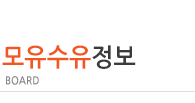- 홈
- 모유수유 상담
- FAQ
- 이유(젖때는)의 시기는 언제쯤인가요?
2002년 세계보건기구와 유니세프에서 승인한 적절한 영유아 식이습관은 생후 6개월간의 완전모유수유와 생후 2년, 혹은 그 이상의 모유수유를 지속하며 그동안 영양적으로 적절하고 안전한 보충식이를 적기에 시작하는 것입니다.
다른 음식의 섭취없이 모유수유만을 하는 완전모유수유 최적 기간은 생후 6개월입니다.
모유수유 기간이 짧으면 비만, 소아암, 크론병, 호킨스병, 알레르기, 염증성 대장 질환 등 을 포함한 건강관련 문제의 발생률이 높아진다는 광범위한 연구결과에 따른 것입니다. 빨리 젖을 때게 되면 엄마에게도 폐경 유방암, 난소암, 골다공증, 당뇨병의 위험성이 높습니다.
인간의 이유 시기는 스스로 면역력을 가질 수 있는 평균 3살에서 7살입니다. 3살 이전의 젖을 떼는 것은 질병에 걸리는 이환율과 사망률을 높일 수 있습니다. 또한 빠른 이유는 구강과 치아의 비정상적인 변형을 일으킬 위험성을 증가시켜 치아교정의 필요성이 증가할 수 있으며, 특히 남자아이의 경우에 회화나 읽기의 장애와 관련되기도 합니다.
다른 음식의 섭취없이 모유수유만을 하는 완전모유수유 최적 기간은 생후 6개월입니다.
모유수유 기간이 짧으면 비만, 소아암, 크론병, 호킨스병, 알레르기, 염증성 대장 질환 등 을 포함한 건강관련 문제의 발생률이 높아진다는 광범위한 연구결과에 따른 것입니다. 빨리 젖을 때게 되면 엄마에게도 폐경 유방암, 난소암, 골다공증, 당뇨병의 위험성이 높습니다.
인간의 이유 시기는 스스로 면역력을 가질 수 있는 평균 3살에서 7살입니다. 3살 이전의 젖을 떼는 것은 질병에 걸리는 이환율과 사망률을 높일 수 있습니다. 또한 빠른 이유는 구강과 치아의 비정상적인 변형을 일으킬 위험성을 증가시켜 치아교정의 필요성이 증가할 수 있으며, 특히 남자아이의 경우에 회화나 읽기의 장애와 관련되기도 합니다.
참고)
American Academy of Pediatrics Work Group on Breastfeeding(AAP). Breast feeding and the use of human milk. 2005.
World Health Organization(WHO). The optimal duration of exclusiveb reastfeeding:
report of an expert consultation. 2001.
World Health Organization(WHO). World Health Organization Global Strategy for Infant and Young Child Feeding. 2003.
Dettwyler K. A time to wean: the hominid blueprint for the natural age of weaning in modern human populations. In: Stuart-Macadam P, Dettwyler K, eds. Breastfeeding: Biocultural Perspectiues. New York: Aldine de Gryter. 1995.
Molbak K. Prolonged breastfeeding, diarrhoeal disease, and survival of children in Guinea-Bissau. BMJ. 1994.
Labbok M. Does breast-feeding protect against malocclusion? Am J Preu Med. 1987.
Broad F. The effects ofinfant feeding, birth order, occupation and socioeconomic status on speech in six-year-old children. NZ Med J. 1983.
작성일 : 2013-10-08 (조회수 : 10,513)
- 모유수유하면서 아기에게 유익한 지방산을 먹이고 싶다면?
- 모유수유할 때, 유두 소독 해야 하나요?
- 돌 되면 모유 영양이 없어지나요?
- 참젖, 물젖이 따로 있나요?
- 산후우울증이면 모유수유 포기해야 하나요?
- 젖먹이는 엄마, 아파도 약 먹으면 안 되나?
- 모유수유 중 인삼, 홍삼 제품 복용하려면?
- 젖량을 어떻게 늘리나요?
- 모유수유 중 한약 복용해도 됩니까?
- 열나는 아기, 집에서 어떻게 돌볼까?
- 엄마의 젖을 말리는 방법은 무엇인가요?
- 젖을 떼는 것은 어떻게 하는 것이 좋을까요?
- 이유(젖때는)의 시기는 언제쯤인가요?
- 모유수유는 언제까지 해야 하나요?
- 유두보호기는 언제까지 사용해야 하나요? 유두보호기 없이 모유수유는 언제부터 할 수 있나요?






























